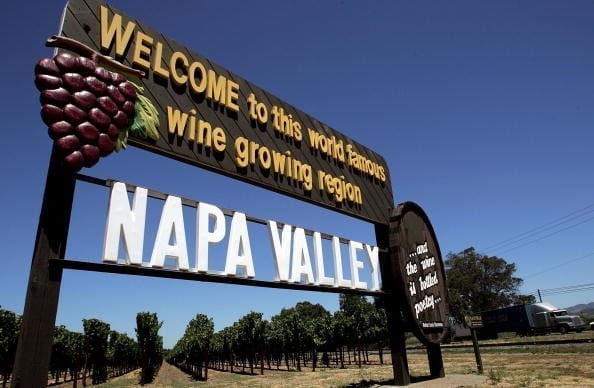The wildfires that tore through Northern California devastated neighborhoods, businesses, and forests. Now as the ash begins to settle, many are beginning to take stock of the damage, including many of the wineries throughout the regions. Some of these wineries are even starting the insurance claim process, though “many of the smaller vintners are likely to find limits in their policies,” meaning payouts are likely to fall short of rebuilding costs, unfortunately.
The wildfires that tore through Northern California devastated neighborhoods, businesses, and forests. Now as the ash begins to settle, many are beginning to take stock of the damage, including many of the wineries throughout the regions. Some of these wineries are even starting the insurance claim process, though “many of the smaller vintners are likely to find limits in their policies,” meaning payouts are likely to fall short of rebuilding costs, unfortunately.
Why will so many smaller wineries run into limitations when filing insurance claims? Well, according to Tom Pagano, “gaps in coverage and a spike in rebuilding costs, typical after disaster” often shock smaller wineries. Pagano “heads the vineyard insurance practice for insurance broker Aon Plc.” When discussing the complicated claims process, he said, “The easy part of insurance is buildings burning down.” He explained that “crops are covered, but not vines, and policies often impose quirky limits, such as when grapes spoil due to electrical failures instead of fires.”

So how many wineries were destroyed or sustained damage? Just how devastating were the wildfires that swept through the region? Well, in addition to more than 5,000 structures being destroyed, about a dozen wineries were burned down, and more than 40 people were killed. Additionally, Pagano estimates that “insured losses from the California wildfires will total billions of dollars for vintners, homeowners, and other entities.” To back up his estimations, “catastrophe risk modeler RMS calculates the region sustained $3 billion to $6 billion of insured and economic losses as of Oct. 12.” At the moment, those numbers don’t take into account crop or automobile losses.
In addition to the dozen or so wineries that were completely destroyed in the fires, the Napa Valley Vintners trade group reported that nearly thirty different wineries had at least “some degree of damage, including to wine-making facilities, vineyards, and tasting rooms.” Another half a dozen “reported significant losses and are part of an industry that contributes $57.6 billion to the state’s annual economy.”
Fortunately, many of the vineyards on the valley floor were untouched, “as the fires in Napa County burned mainly in the hillsides.”
So what kind of insurance policy limitations will many smaller wineries encounter as they begin filing claims? For starters, many smaller wineries tend to “lack resources or expertise to negotiate additional coverage for issues such as spoilage caused by utility failures, which is typically subject to far lower limits than other parts of a policy.” Additionally, Pagano pointed out that “wineries that try to cut corners by underinsuring must also often pay co-insurance, a type of penalty that is equivalent to a percentage of the underinsured amount, based on factors such as coverage the business should have had, and deducted from the final payout.”
When all is said and done, there’s no getting around the fact that this is going to be a big issue for smaller wineries as more and more begin the insurance claim process. It will be interesting to see how everything plays out.
Sources:
Insurance payouts may not cover all wildfire damage for California wineries
Thousands of Wine Country wildfire claims jolt insurers, pose thorny challenges for homeowners


Join the conversation!